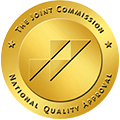
The relationship between trauma and substance use disorders among adult female populations is complex and requires a unique approach to treatment. An alarmingly high proportion of women with addiction and substance use issues have histories of trauma including childhood and adult sexual abuse, physical assault, neglect, emotional, verbal, and psychological abuse, and domestic violence. It is therefore essential that treatment interventions for addicted women embrace a perspective that highlights the undeniable connections between substance use and trauma while recognizing the survivor’s fundamental resilience over pathology.
Here are some alarming facts about women and trauma in the United States:
¥ About half of all women in the U.S. will be exposed to at least one traumatic event in their lifetime.
¥ Women are more vulnerable to sexual assault and childhood sexual abuse than men.
¥ Nearly 1 in 5 women (18.3%) in the United States have been raped at some time in their lives.
¥ Women experience PTSD at two to three times the rate that men do.
¥ Lifetime estimates of PTSD are 9.7% for women and 3.6% for men
Even more shocking is the increased prevalence of trauma among women who suffer from substance use disorders:
¥ 80% of women seeking treatment for addiction report a lifetime history of sexual and/or physical assault.
¥ Women with PTSD and substance use disorders present with higher rates of other mental illnesses that can complicate treatment and prognosis.
¥ The rate of PTSD in the general population of women is about 11%, for women in substance use treatment the rate is 30-59%.
The high incidence of trauma among addicted women undoubtedly shapes the nature of treatment approaches and interventions applied to women seeking relief from both addiction and trauma related symptoms. For women suffering from addiction and trauma, it can be extremely difficult to maintain abstinence because trauma related distress and emotions continuously trigger the compulsion to drink, use, or act out in addictive behaviors. In the context of trauma, addiction arises NOT simply as a pleasure seeking strategy but as a primary survival coping strategy to self soothe and self regulate. For the trauma survivor, addiction can become a way to function and feel safer in the world.
In other words, to simply dismiss addiction as a “bad habit” or “moral failing” conceals the functionality of the addictive behaviors. For most women struggling to cope with debilitating trauma related symptoms, drug and alcohol use can serve as a way to numb symptoms, cope with intolerable effects, slow reactivity, manage impulsivity, distract from obsessive thinking, stop intrusive memories, combat helplessness, and facilitate dissociation. In short, substance use becomes a means of survival in an otherwise unbearable state of being. Unfortunately, this is not a sustainable (or healthy) survival strategy. Ultimately, the suffering individual requires a new set of coping mechanisms coupled with compassionate support, connection, and hope in order to begin her healing process.
Because of the powerful relationship between trauma and substance use, it is imperative that addiction treatment integrates both trauma-informed and gender-responsive interventions in order to reduce the risk of trauma-based relapse. Simply put, treatment MUST address both the addiction and underlying trauma. When the addictive behaviors are gone, all the traumatic memories, emotions and thoughts that were being suppressed by the addiction will surface. It is impossible to heal the trauma while the addiction is active, and equally as impossible for the addicted survivor to maintain abstinence in the face of debilitating trauma related symptoms without effective alternative coping skills.
Specifically, treatment of co-occurring substance use disorders and trauma related disorders must address the relationships between:
¥ The trauma and the addictive behavior
¥ The role of the addictive behavior in medicating traumatic activation
¥ The origins of BOTH in the traumatic past
¥ The reality that recovering from EITHER means recovering from BOTH
¥ Stigma and shame associated with trauma, gender, addiction, and mental illness.
¥ Cultural, social, and systemic barriers that increase risk for relapse.
In addition to recognizing the complex relationships between gender, trauma, and addiction, it is important to recognize the survivor’s need to be respected, informed, connected, and hopeful regarding her recovery process. The survivor can be empowered through self-awareness and understanding the interrelation between trauma symptoms and other issues such as process addictions, eating disorders, personality disorders, depression, and anxiety. A collaborative approach to healing that actively involves the survivor, family members, community support, and a variety of trained providers typically yields the most successful treatment outcomes.
Coupled with this integrated approach to treatment, developing a renewed sense of connection and self worth are arguably the most important elements of healing for addicted female trauma survivors. Judith Lewis Herman, author of Trauma and Recovery: The Aftermath of violence From Domestic Abuse to Political Terror, describes the powerful and restorative healing that comes from connection and the careful reconstruction of one’s sense of self:
“Traumatic events destroy the sustaining bonds between individual and community. Those who have survived learn that their sense of self, of worth, of humanity, depends upon a feeling of connection with others. The solidarity of a group provides the strongest protection against terror and despair, and the strongest antidote to traumatic experience. Trauma isolates; the group re-creates a sense of belonging. Trauma shames and stigmatizes; the group bears witness and affirms. Trauma degrades the victim; the group exalts her. Trauma dehumanizes the victim; the group restores her humanity.”
Survivors have repeatedly described the indispensible role that connection has played in their own healing processes. Incorporating an integrated and multidisciplinary treatment approach for addicted female trauma survivors while offering opportunities for connection, safety, and self-love can reawaken that person’s sense of possibility and hope. Treatment and community based support services not only offer a path to recovery but provide survivors with indispensible opportunities for connection with other women who speak the complex language of trauma and addiction. Faith, courage, dignity, and peace, once believed to be irretrievably destroyed, can be reclaimed and renewed as the trauma survivor begins to recognize the lost parts of herself mirrored in the actions of her fellow survivors.
The resilience and transformation of the survivor as she moves through her healing process is beautifully paralleled by the lotus blossom’s growth cycle. Like the trauma survivor, the lotus flower begins as a plant growing deep below the surface of dark and murky waters. The plant must fight to make its way to the surface in order to reach sunlight and eventually blossom. The lotus flower mirrors the addicted trauma survivor’s recovery process and reminds us that healing and growth are possible no matter the depth of our despair or the darkness of our past. If given the right support and environment, the victim once trapped in dark isolation, can thrive in the brilliance of love and connection. With help and support, anything is possible. And as the once fragmented victim breaks through the surface, she eventually learns that not only has she SURVIVED the darkest of times, but that she is THRIVING above the surface of deep and muddy waters.


